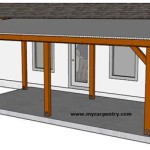Can I Install a Paver Patio Yourself? A Comprehensive Guide
Installing a paver patio can significantly enhance the aesthetic appeal and functionality of an outdoor living space. The decision to undertake this project as a do-it-yourself (DIY) endeavor is contingent on several factors, including the homeowner's skill level, available time, budget constraints, and the desired complexity of the patio design. This article provides a comprehensive overview of the considerations, steps, and potential challenges involved in self-installing a paver patio, enabling readers to make an informed decision about the feasibility of a DIY approach.
Paver patios offer numerous advantages over traditional concrete or asphalt surfaces. They are generally more visually appealing, allow for greater design flexibility, and are easier to repair. Individual pavers can be replaced if damaged, avoiding the need to resurface the entire patio. Furthermore, paver patios can increase property value and provide a durable, long-lasting outdoor space for relaxation and entertainment.
However, it is crucial to understand that installing a paver patio is a physically demanding task that requires careful planning, meticulous execution, and a solid understanding of basic construction principles. A poorly installed paver patio can lead to a variety of problems, including uneven surfaces, sunken pavers, weed growth, and drainage issues. These problems not only detract from the patio's aesthetic appeal but can also compromise its structural integrity and longevity.
Key Point 1: Assessing Your Skills and Capabilities
Before embarking on a DIY paver patio installation, it is essential to honestly assess one's own skills and capabilities. This assessment should encompass both technical skills and physical stamina. Some experience with landscaping, construction, or similar hands-on projects is highly beneficial. Familiarity with the use of power tools, such as circular saws and plate compactors, is also advantageous. If one lacks prior experience with these tools, it is advisable to seek instruction or guidance from a qualified professional before attempting to use them.
The physical demands of paver patio installation should not be underestimated. The project involves tasks such as digging, leveling, lifting heavy pavers, and operating machinery. Individuals with back problems, joint pain, or other physical limitations may find the work particularly challenging. It is important to consider one's physical fitness and ability to perform these tasks safely and effectively.
Furthermore, patience and attention to detail are critical attributes for successful paver patio installation. The process requires meticulous planning, precise measurements, and careful execution. Rushing through the project or neglecting important details can lead to costly mistakes and unsatisfactory results. It is important to be prepared to dedicate sufficient time and effort to ensure that the patio is installed correctly.
If one's skills or physical capabilities are insufficient, it may be prudent to consider hiring a professional contractor. While professional installation will incur additional costs, it can also ensure a high-quality, durable, and aesthetically pleasing result. A professional contractor will also have the experience and expertise to address any unforeseen challenges that may arise during the installation process.
Key Point 2: Planning and Preparation
Thorough planning and preparation are essential for a successful DIY paver patio installation. This phase involves several critical steps, including designing the patio layout, calculating material quantities, obtaining necessary permits, and preparing the site.
The patio design should take into account the size and shape of the available space, the intended use of the patio, and the desired aesthetic appeal. Considerations should include the paver pattern, the perimeter edging, and any features such as steps, retaining walls, or fire pits. It is helpful to create a detailed drawing or plan of the patio layout, including accurate measurements and dimensions.
Once the design is finalized, it is necessary to calculate the quantities of materials required. This includes pavers, base material (such as gravel or crushed stone), sand, and edging materials. Accurate material quantities are essential to avoid running out of supplies mid-project or being left with excessive leftovers. It is advisable to consult with a local landscaping supply store to determine the appropriate types and quantities of materials for the specific patio design and soil conditions.
In many jurisdictions, building permits are required for paver patio installations, particularly if the patio is adjacent to a structure or affects drainage. It is important to check with the local building department to determine whether a permit is required and to comply with all applicable regulations. Failure to obtain necessary permits can result in fines and delays.
Site preparation is a crucial step in the installation process. This involves removing existing vegetation, excavating the soil to the appropriate depth, and leveling and compacting the base material. The depth of excavation will depend on the type of pavers used and the desired finished height of the patio. It is important to ensure that the base material is properly compacted to provide a stable and level foundation for the pavers.
Proper drainage is also an important consideration during site preparation. The patio should be sloped slightly away from any structures to prevent water from pooling on the surface. If drainage is a concern, it may be necessary to install drainage pipes or other drainage solutions.
Key Point 3: Installation Process and Potential Challenges
The installation process involves several key steps, including laying the base material, installing the edging, spreading the sand, placing the pavers, and compacting the surface. Each step requires careful attention to detail and adherence to best practices.
The base material should be spread in layers and compacted thoroughly after each layer. A plate compactor is recommended for compacting the base material, as it provides a uniform and dense surface. The depth of the base material will depend on the soil conditions and the intended use of the patio. A thicker base is generally recommended for areas with heavy foot traffic or unstable soil.
The edging serves to contain the pavers and prevent them from shifting or spreading over time. The edging can be made of various materials, such as plastic, metal, or concrete. It is important to install the edging securely and ensure that it is level with the surrounding grade.
A layer of sand is spread over the base material to provide a level and smooth surface for the pavers. The sand should be screeded to a uniform depth, typically around 1 inch. It is important to use a clean, sharp sand that is free of debris.
The pavers are then placed on the sand bed, following the desired paver pattern. It is important to ensure that the pavers are level and properly spaced. A rubber mallet can be used to gently tap the pavers into place. As you install the pavers, frequently check for level and alignment, making adjustments as needed.
Once all the pavers are in place, the surface should be compacted with a plate compactor. This will help to seat the pavers firmly in the sand bed and create a smooth, even surface. After compacting, polymeric sand should be swept into the joints between the pavers. Polymeric sand helps to stabilize the pavers and prevent weed growth. The polymeric sand should be activated by lightly misting the surface with water, following the manufacturer's instructions.
Throughout the installation process, several potential challenges may arise. One common challenge is dealing with uneven or sloping ground. This may require additional excavation and leveling to create a stable and level base for the patio. Another challenge is cutting pavers to fit around obstacles, such as trees or walls. This requires the use of a diamond blade saw and careful measurements. Drainage issues can also pose a challenge, particularly in areas with poor soil drainage. This may require the installation of drainage pipes or other drainage solutions.
The potential for encountering unexpected utility lines during excavation is another significant concern. Before digging, it is imperative to contact local utility companies to locate and mark any underground lines. Striking a utility line can be dangerous and can result in serious injury or property damage.
Proper disposal of excavated soil and construction debris is also an important consideration. It is important to dispose of these materials responsibly and in accordance with local regulations. Renting a dumpster or arranging for waste removal services may be necessary.
Weather conditions can also significantly impact the installation process. Rain can make it difficult to compact the base material and can wash away sand. Extreme heat can make it uncomfortable to work outdoors for extended periods. It is important to monitor the weather forecast and plan accordingly.

How To Build A Patio An Easy Do It Yourself Project

How To Build A Backyard Paver Patio All By Yourself

How To Build A Paver Patio Young House Love

Build It Yourself A Guide To Paver Patio Construction Earthworks Landscaping

Easiest Patio Pavers You Ll Ever Install

How To Build A Patio In Weekend Fine Gardening

Installing Patio Pavers Should You Hire A Professional Or Do It Yourself

How To Build A Paver Patio Rogue Engineer

How To Install Patio Pavers The Home Depot

We Built A Paver Patio Like Pro Start To Finish
Related Posts








